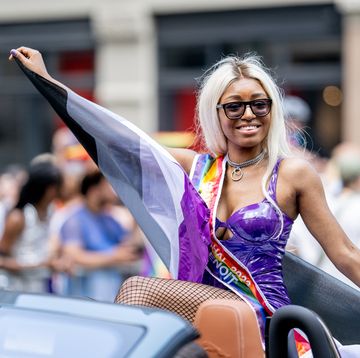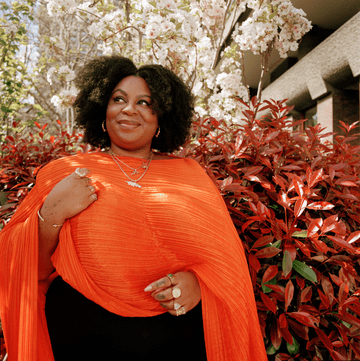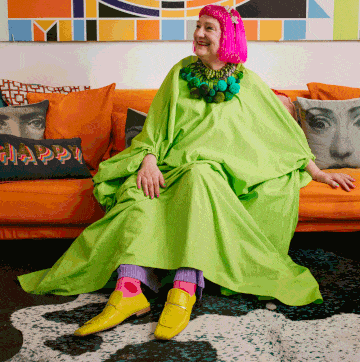We’re at a crossroads in the world of motorsport. Formula One - and by association, other racing series - has exploded in popularity. Particularly, and notably, among women. This is thanks in no small part to Netflix’s rampantly successful Drive to Survive documentary, but also a succession of other factors, like streaming more broadly, the advent of TikTok, and indirectly, the Me Too movement. So we’re sitting here, poised at the head of a pivot, waiting to see if we’ll convert this momentum into meaningful, lasting change, or recede backwards, to the way it’s always been.
There have been concerted efforts to draw women into the slipstream of single-seater racing’s ascendance over the years. Leaning on growing fandom, Dare to be Different (2016) and Girls on Track (2019) initiatives strove to bring an influx of young girls into karting, widely recognised as the training ground for professional racing. And the W Series (2019-2022), an all-female open-wheel championship, tried to establish a platform for women to prove their mettle on a level playing field, outside of the perceptibly sexist structures of the Formula races. And yet, progress in the last decade has been incremental at best. Women’s participation in motorsport racing has still never risen above 5% of the pool, and the W Series went into administration less than a year after its third season.
However, the time now feels kairotic, with enough conditions coming together to catalyse change. Not only might this generation witness the next Lella Lombardi make it to the F1 grid, but we could see the arrival of more female mechanics, more women race engineers and even the next female Guenther, Christian or Toto. And not only that, the changing landscape for women in motorsports could have a real, and eventually measurable effect on the way women approach cars altogether. As our appreciation for performance driving intensifies, we might finally be able to throw off the age-old stereotypes that women make poorer drivers, that we don’t know what’s under the hood, or that we only buy SUVs and entry level vehicles. Perhaps in the future, we’ll see more women in a Vantage than a Sportage.
The Rise and Rise of Susie Wolff
There’s one woman credited with leading this revolution. In reality, the movement we’re seeing is the work of a whole raft of women (and some men), a few of which will feature if you read on, but it helps to have someone at the vanguard. And she’s a worthy standard-bearer. Susie Wolff MBE was once a talented racing driver herself who, switching to the business side, moved through the ranks in an impressive, unparalleled way, to become Team Principal of Venturi Racing (now Maserati MSG) in Formula E and then CEO of the whole operation. It was Wolff who founded Dare to Be Different and engineered the joining of forces between it and motorsport governing body the FIA. This year, she takes the fight to a new and bigger platform, as Managing Director of the F1 Academy. Here she hopes to influence the FIA even further, procuring buy-in at every level of the sport in order to secure race seats, broadcast slots and sponsorship for the next generation of girls. Wolff is a quiet, pervasive power, without any of the posturing that you see on Netflix. A good advert for the way women get things done.
The F1 Academy
‘Clearly this is a great time to be a Formula One fan,’ says James Allen, president of Motorsport Network. And he’s absolutely correct. For die-hard lovers of motorsport, there are more ways than ever to engage with its competitions and key players. Between Channel 4, Netflix, TikTok and Threads, fly-on-the-wall viewership can take place 24/7, with better backstage access. But not only is it a great time, it is a new time for Formula One fandom, with fresh faces everywhere you look. Allen’s team conducted a survey in 2021 which discovered that female interest had almost doubled in four years. What’s more, the same study found that these fans were extending their enthusiasm to other championships, like Le Mans, MotoGP, IndyCar and Formula E. Women love racing, it turns out. They just hadn’t known it before.
And now that women are hooked, the role that F1 Academy stands to play cannot be overstated. ‘This has the possibility of changing the world of motorsport,’ says Wolff, speaking to me in the paddock during the British Grand Prix weekend. ‘If we get it right with F1 Academy, it will drive change long term. It’s a once in a lifetime opportunity.’ Another all-female, single-seater racing championship, yes, but F1 Academy differs from the W Series in that it’s entwined within the infrastructure of Formula One, giving it much better visibility. The schedule of races sits within the F1 calendar, with the final race taking place during the United States Grand Prix weekend. It has prominent placement on F1TV, with the UK’s broadcast rights residing with Sky Sports. This, combined with the F1 Academy Discover Your Drive piece - encouraging girls to try karting - plus the pledge to support F1 Academy winners through further stages of their driving careers, makes this a much more comprehensive approach than has ever been tried before.
‘And then you have the fact that society has changed, the world has changed,’ says Wolff. ‘The Me Too movement kicked off a huge shift [in the way women assert themselves]. And there is now an expectation as a business, plus a willingness and an interest, to commit to diversity. These factors have given us the perfect timing, and momentum. It’s a perfect storm.’
Sexism is Systemic
The post-Me Too world may have changed. But, by how much? The approach to women in racing is just a microcosm of Britain’s historical status quo. We won’t see gender equality in motorsports until we successfully dismantle the patriarchy altogether. A big job, and not one that Wolff and a handful of others can do on their own. There is some suggestion that society’s core belief system is changing though, at least in relation to women and cars. Inside Track, a report conducted by David Coulthard and Karel Komárek’s More Than Equal organisation, discovered that, ‘There is a universally strong belief that female drivers have all the necessary technical racing skills and emotional intelligence to compete at an elite level, and on an equal footing with their male counterparts.’
What’s more, ‘Over 80% of fans believe women will be racing in F1 within the next 10 years.’
Despite this optimism, the barriers to success are still unforgiving. The ‘performance gap’, as Inside Track coins it, is exacerbated by lack of opportunity, an absence of track time, pervasive negative stereotyping, sexist language, a dearth of sponsorship and more. Plus, the press plays a ruinous role in degrading the women that do break through. More on that later. These barriers aren’t just hindering women racing drivers, but women in every area of the sport. Walking into a garage to confront a sea of sceptical male faces would be intimidating for any female mechanic. Only a handful will persevere.
But as Wolff herself points out, perseverance at every level must be the goal, because seeing women on the grid isn’t the only marker of success. It might not even be the main one. ‘Of course one of the dreams is to get a woman racing in Formula One,’ she says, ‘But that is not my only dream.’ The intention that she outlines is to inspire greater equality throughout the industry; in the paddock, in the garage, on television, in engineering and in the boardroom. Considering women are to thank for crucial automotive advances like GPS and windshield wipers, imagine what progress we might see if there were a few more of us around.
The Glass Cliff
Women in the motorsport spotlight can expect to put up with some ‘banter’ and a suite of closed doors. The sort of male chauvinism that presents itself in plain sight. In which case, thick skin and a hard head might see them through. But they also have to watch out for a more insidious evil: the glass cliff.
‘Women are more likely than men to be promoted to leadership roles during periods of crisis or downturn when the chance of failure is highest,’ says Julia Kagan at Investopedia. In other words, if we’re headed towards disaster, on a woman’s head be it. Arguably, we’ve seen instances of this already in the motorsport world. Claire Williams’ tenure as de-facto team principal at Williams was controversial. A perceived bottoming out, loss of the ROKiT sponsorship, three last place finishes in the championship and then the eventual sale of the historically family-owned constructor to American investment firm Dorilton Capital, earned her countless critical headlines. ‘I got a lot of abuse,’ she admits of bearing the blame for the team’s decline. She was one of the first and, at the time, the only female leader of a Formula One team, and then it was seen to have failed.
Really though, the deck was stacked against her. Williams inherited a team that was already on its knees, never really having recovered financially after breaking up with BMW, disoriented by the hybrid era, and unable to keep pace with the spending of bigger teams. The marketing and communications director was handed a big, stuttering machine that she was possibly ill-trained and ill-equipped to fix. In other words, it really wasn’t her fault, or certainly not her’s alone. And although we are not suggesting that the organisation deliberately made a scapegoat out of her, being the only woman in her position of prominence at a time of such public fiasco probably did more harm than good for the cause of other women in the industry.
The Power of Role Models
We’re not in Claire Williams’ era anymore. As we try to drill the posts in for long term change, there are a few key pillars to secure. The first is more visible role models.
‘I once went to a women in motorsports conference,’ Jessica Hook tells me. She’s a design engineer at Hendrick Motorsports and Chief of Staff for Nascar’s Garage 56 project. ‘And there was this quote I heard, which has stuck with me ever since: “You can’t be what you can’t see”.’ Women need to see women modelling behaviours, opening doors and reaching their hands out behind them to pull others along. ‘For me,’ she continues, ‘it was seeing Leena Gade in Audi’s Truth in 24 II: Every Second Counts documentary. I knew I wanted to be in motorsport, but it was a very fuzzy image. To see Leena Gade on that pit perch being the race engineer, it put everything in focus.’
Beyond giving young girls something to aspire to, women modelling prominent roles is important for others to see too. Racing driver and Sky Sports presenter Naomi Schiff tells me that not seeing other women of colour high up in the sport also affected the confidence of those that she needed to invest their time and money in her. ‘It was 100% a barrier. Had I looked like another typical racing driver, I would have been more likely to get opportunities - even just more test days in a car. But it was hard for a lot of people to believe I could be the next Lewis Hamilton. There aren’t people who look like me who race at the top levels of motorsport.’
For younger women, like Extreme E racing driver and Red Bull athlete Catie Munnings, the landscape is starting to look better. To Munnings, Susie Wolff is a catch-all hero, having raced, managed, and strategised, and now in making it her position to open it all up the next generation. ‘Until I met Susie, I had no idea what was possible,’ she says. ‘She is always interested, she believes in what I believe in, she knows we need to get to the point where nobody is calling us “female” drivers. It inspires something in me. Even at 16, I thought: “This woman is amazing.” And it was so important to have that.’
The more role models we have, the more they won’t have to be perfect. We’ll be able to afford to have a couple of Danica Patricks, who think the sport is inherently ‘masculine’ and that she is simply an anomaly. Women are subject to the same flaws and frailties as the rest of the human race, and that’s okay, but we just need enough of us around that the overall influence on the next generation is positive.
Show Us the Money
The next, crucial piece of the puzzle is the financing. More Than Equal’s ‘performance gap’ - where the backing and support doesn’t keep up with women’s interests - doesn’t just apply to racing drivers. Women struggle to get investment, full stop. Less than 2% of all venture capitalist funding goes to female entrepreneurs. For women in sport, the picture is similar. In 2011, investment in women’s sport stood at just 0.5% of all sport sponsorship. Today, thanks in no small part to the impressive popularity of women’s football, the picture is different, but we have a long way to go, especially when you consider how expensive it is to have a career in car racing.
‘It’s great having the F1 Academy,’ says TV presenter and pit lane reporter Nicki Shields, ‘but you need to have stuck it out in karting until you’re 16 or 17 before that.’ An extremely costly pursuit. ‘When you start out, it’s about 13% girls, but then it drops at the more senior levels of karting down to about 7%.’ At this stage, girls largely rely on family financing, and with so little evidence that a woman’s racing career will lead anywhere, it can be difficult to convince parents to shell out.
Even if you can, it only gets pricier after that. ‘My dad took a second loan on his house to be able to send me racing in Europe,’ shares Schiff. ‘He invested in a prototype championship called ACM, but I only really did one race before it went bankrupt. My dad had paid everything up front and we lost all the money.’ And so as she progressed through her career, she had to rely on the investment of others, which involved a lot of ‘knocking on doors, begging for opportunities,’ only to hear ‘no’ over and over again because, as she felt, people were too nervous to back someone like her.
There is now an enormous body of evidence to suggest that investing in women pays off. Returns on women’s football are staggering, prompting private equity groups to put hundreds of millions more into the sport this year for the world cup. And in motorsport, a burgeoning female fanbase has changed the game for brands with money to put into it. According to Inside Track, 76% of women think more highly of companies that support female sportswomen. And even more valuably, 56% of female fans ‘display a strong propensity to purchase a sponsor’s product above that of a non-sponsor.’ So there’s bonafide bang for your buck.
He For She
It might feel like an old concept, but just as the Me Too movement had its HeForShe component, whereby men took to the front lines of the fight for women’s rights, so too does motorsport. And the support of key male figures in the paddock, the boardroom and the FIA is a big part of the reason that change is accelerating.
‘If you’d asked me that question in 2016, I would have said two, maybe three names. Now, in 2023, I can name Greg Maffei (Liberty Media's president and CEO), Stefano Domenicali (CEO of the Formula One Group) and all ten team principals,’ says Wolff. Not to mention ex-racing driver Coulthard and entrepreneur Komarek, who founded More Than Equal, and Lewis with his instrumental Hamilton Commission. ‘Formula One is a big business,’ continues Wolff, ‘and they’ve realised that to stay relevant and to keep up with their massively growing fanbase, of which a huge demographic is women, they need to do something. So now, all the decision-makers in the paddock are supportive.’
It’s true of many of the drivers too. Speaking to McLaren’s Lando Norris, ahead of the British Grand Prix, it’s clear he’s on board. ‘There are more women in the paddock than ever before,’ he points out, ‘we just need to get more girls into racing. When I go to some of the “arrive and drive” events in America, I see almost half of them being girls. So it's definitely progressing.’ Considering that celebrity racers like Norris have such an enormous fanbase and influence (he has an 8m combined follower count across Instagram and TikTok), their advocacy for women has huge clout.
Language is Important
Whether it’s gendered terms, intensely technical specs that sound like code, or sexist ribbing in the garage, language can be gate-keeping. Editorial Director at AutoTrader Erin Baker has done a lot of work in this area, looking at the ways automotive brands can speak to women that is neither patronising nor preclusive. What shows like Drive to Survive have proven, however, is that women can easily be brought into the fold, learning to use all the same terminology as men, so long as they feel welcome. How often have you now heard your female friends commenting on when to ‘engage DRS’ or discussing ‘tyre strategy’?
The key, of course, is allowing for the learning curve. Letting women and girls display their enthusiasm as novices, and respecting when they’ve begun to develop an understanding. ‘You don’t want to be made to feel stupid when actually you do know quite a lot,’ says Shields. ‘I have two boys,’ she continues, ‘And I'm very excited that when somebody asks my kids, “why are you into motorsport?” They’re going to say, “because of my mum”.’
The media plays a vital role in this too. Every time Naomi Schiff is described in terms of her appearance, or in some cases which she recalls for me, in terms of what she looks like in a bikini, it devalues her contribution to the sport. Perhaps worse still, whenever Susie Wolff is characterised primarily by her relationship to her husband, as happens often, it undermines her power. It suggests that women are relational, diminutive, recognisable for their proximity to an important male. These are lazy journalistic traps, which pander to an outmoded status quo.
Electric is Good for Women
Much as the electric evolution has changed the conversations with women in dealerships, it is also forcing legacy institutions to break open and reconstruct their business models, tearing apart the rule book in the process.
‘The automotive industry hadn’t changed for about 100 years,’ says Shields. ‘But now we’re on a completely new road of continuous change. Whether it’s electrification, sustainable fuels, hydrogen, the rate of progress is incredible.’ With such rapid development, comes the requirement for new thinking. ‘I was using my biological sciences degree to become something of a science communicator, about the environment and wildlife. I did a show on sustainability and interviewed the team at Renault and they told me about this new motorsport championship called Formula E.’ This led to Renault inviting her to join the dots between battery technology, sustainability and the future of motorsport, which she still does today, as the face of Formula E on television.
Even newer racing formats are being introduced than Formula E, with huge benefits for women. Alejandro Agag, the businessman who owns FE has also founded Extreme E - the first racing format to have a prerequisite that every team must seat both a man and a woman. Catie Munnings and Emma Gilmour, both ex-rally drivers, now compete in the Extreme E championship. ‘The exposure has been amazing for focussing on the female aspect of it,’ says Gilmour from the McLaren motorhome at Goodwood, where she’s making an appearance and showcasing her NEOM McLaren car. ‘Being able to have this opportunity, being in the international spotlight - I think it attracts a new kind of audience.’
The augmentation of technology has prompted big automotive and racing brands to invest in women behind the scenes too. This year, McLaren announced an all-female STEM programme. Extreme E launched ‘Racing for All,’ supporting young mechanical and engineering talent. Red Bull is doing women in engineering events with Rokt - a leader in technology and software with a particular commitment to diversity. With the 2030 goal post for carbon neutrality, the need to move at an ever quickening pace is clear, and women’s brains are finally being tapped for their value.
Playing the Gender Card
While the barriers to entry still exist, we’ve also hit a sweet spot whereby gender can be a calling card. In an industry that for centuries was dominated by men, this newfound recognition of women’s worth will mean a rush to fill the vacuum. ‘I’ve had a lot of opportunities that I know my male counterparts didn’t get,’ says Gilmour, ‘When I started [at McLaren, as their first ever woman racing driver], I was definitely a novelty. I feel celebrated. They’re very proud that they’ve got a female competing, representing their brand.’
It’s something that Naomi Schiff recognises too. For although she still experiences plenty of discrimination, mostly among online trolls, she also recognises the value she represents to Sky Sports. ‘I didn’t know that they were considering me for the pundit role because, as everyone loves to point out in the comments section, I’ve never driven a Formula One car, but there’s so much that I can speak on. I can show that [ex-racing driver] part of myself, but also I can inspire young girls of colour, to show them that they can be racing drivers too.’
Wolff feels she didn’t play the gender card enough when she was further back in her career, but she knows now that during this brief flash in history, this inflection point where everything stands to change, it will be crucial to take hold of the advantage. The motorsports industry knows, ‘it’s not enough anymore, to say: “We’re working on it”,’ Wolff states. She’s now in a position to say to them: ‘What are your KPIs? What are your goals? When are you reaching them? You’re doing something on diversity? Show me.’
A Tidal Change
And so, imagine we play this hand correctly. We finally see women on the track, in the garage, at the tech centres, leading the teams and filling the grandstands with their friends. Visible, consistently part of the conversation, enjoying the culture, changing the culture. What else changes as a knock-on effect? If interest in driving sports grows, it follows that women’s interest in driving for pleasure might also grow, and with it, confidence behind the wheel. We might see track days popping up in gift guides for mums. More all-female road trips in marketing campaigns. Women are already responsible for 80% of all car purchase decisions, and we’ve bigger and bigger disposable incomes, so perhaps we’ll see more women buying performance cars. Better still, as we see further gender equality in engineering, perhaps we’ll see more cars designed by us and for us. We’ve a way to go though, relying on female uptake across every area of the automotive landscape. So, the butterfly doors are open girls, come on in.





















